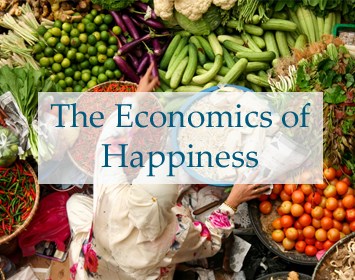Inauguration 2017 Special Coverage w/ Angela Davis, Naomi Klein, Ralph Nader & More
Menu

Special coverage in the Trump Era
From Public Citizen's Corporate Presidency site: "44 Trump administration officials have close ties to the Koch brothers and their network of political groups, particularly Vice President Mike Pence, White House Legislative Affairs Director Marc Short, EPA Administrator Scott Pruitt and White House budget director Mick Mulvaney."
Dark Money author Jane Mayer on The Dangers of President Pence, New Yorker, Oct. 23 issue on-line
Can Time Inc. Survive the Kochs? November 28, 2017 By Jane Mayer
..."This year, among the Kochs’ aims is to spend a projected four hundred million dollars in contributions from themselves and a small group of allied conservative donors they have assembled, to insure Republican victories in the 2018 midterm elections. Ordinarily, political reporters for Time magazine would chronicle this blatant attempt by the Kochs and their allies to buy political influence in the coming election cycle. Will they feel as free to do so now?"...
"Democracy in Chains: The Deep History of the Radical Right’s Stealth Plan for America" see: our site, and George Monbiot's essay on this key book by historian Nancy MacLean.
Full interview with The New Yorker’s Jane Mayer March 29, 2017, Democracy Now! about her article, "The Reclusive Hedge-Fund Tycoon Behind the Trump Presidency: How Robert Mercer Exploited America’s Populist Insurgency."
Democracy Now! Special Broadcast from the Women's March on Washington
The Economics of Happiness -- shorter version
Local Futures offers a free 19-minute abridged version of its award-winning documentary film The Economics of Happiness. It "brings us voices of hope of in a time of crisis." www.localfutures.org.
What's New?
June 21, 2017
A Case For Reparations At The University Of Chicago
From Black Perspectives, published by the African American Intellectual History Society (AAIHS), May 22, 2017. Posted on June 20 by popularresistance.org
(*This post is derived from a paper by the Reparations at UChicago Working Group (RAUC), which emerged from a recent session of the University of Chicago’s U.S. History Workshop on “Reparations and the Modern University.”)
"Julia Leakes yearned to be reunited with her family. In 1853, her two sisters showed up for sale along with her thirteen nieces and nephews in Lawrence County, Mississippi. Julia used all the political capital an enslaved woman could muster to negotiate the sale of her loved ones to her owner, Stephen A. Douglas. Douglas’s semi-literate white plantation manager told him “[y]our negros begs for you to b[u]y them.” Despite assurances that this would “be a good arrangement,” Douglas refused to shuffle any of his 140+ slaves to reunite this separated slave family. Instead, Julia’s siblings, nieces, and nephews were put on the auction block where they vanished from the historical record.1
Unfortunately, things went from bad to worse for Julia. By 1859, she had a 1 in 3 chance of being worked to death under Douglas’s new overseer in Washington County, Mississippi. Douglas’s mistreatment of his slaves became notorious. According to one report, slaves on the Douglas plantation were kept “not half fed and clothed.”2 In another, Dr. Dan Brainard from Rush Medical College stated that Douglas’s slaves were subjected to “inhuman and disgraceful treatment” deemed so abhorrent that even other slaveholders in Mississippi branded Douglas “a disgrace to all slave-holders and the system that they support.”3
The University of Chicago does not exist apart from Julia Leakes and the suffering of her family—it exists because of them. Between 1848 and 1857, the labor and capital that Douglas extracted from his slaves catapulted his political career and his personal fortune. Slavery soon provided him with the financial security and economic power to donate ten acres of land (valued at over $1.2 million in today’s dollars) to start the University of Chicago in 1857. This founding endowment, drenched in the blood of enslaved African Americans, was leveraged by the University of Chicago to borrow more than $6 million dollars in today’s terms to build its Gothic campus, its institutional structures, its organizational framework, its vast donor network, and an additional $4 million endowment before 1881. In short, the University of Chicago owes it entire presence to its past with slavery.
When we began this project, we assumed that the University of Chicago was a postemancipation institution. However, as the University of Chicago historian and Dean of its College John Boyer has shown, the deep ties between the university’s original Bronzeville campus and its current Hyde Park campus constitute a rich “inheritance” and give the university what he calls “a plausible genealogy as a pre-Civil War institution.” Continuities between the two campuses can be found almost everywhere among its trustees, faculty members, student alumni, donor networks, intellectual culture, institutional memory, distinctive architecture, library books, and, of course, the University of Chicago’s name itself. The two campuses would undoubtedly be deemed inseparable alter egos of one another. Boyer convincingly makes this case. What he seems to have missed, however, was that this pre-Civil War founding also came with a founding slaveholder who endures to this day—haunting the halls of the Hutchinson Commons." ...

